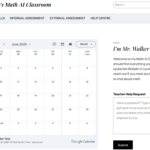It’s almost that time of year when we look back at the semester and see how far we’ve come. One thing that stands out for me about the start of this term was how puzzled I was by our EDCI 336 instructor’s insistence on not using Brightspaces! Wouldn’t you expect the technology course to buy into our new LMS? How frustrated I was when I realized I’d have to navigate yet another instructor web page (thinking back to the horrors of web pages made by math professors). The justification didn’t mean much to me when it was given in September, but it sure rings true now: the content should exist for everyone, especially after the course ends.
Open Education
How many times have I needed information from a previous course and couldn’t access it because I didn’t download the course files? It seems so strange to me that these course instances created on LMS’s are born when the course begins, develop over a few months, and are lost forever after the final exam.
This brings me to the concept of open education: everything available to everyone all of the time. Why build a course on an LMS only to have it swiftly scrubbed from the internet when it’s no longer needed? That’s probably the greatest lesson I’ve learned through EDCI 336. Own your data and place it somewhere that can be seen by everyone and has a chance at lasting for at least a little while.
And what better way to make a long-lasting, totally open resource than starting a blog!
Personal Learning Networks
A fun side effect of these blogs is that they are social; they build a community with people who share your interests. You’re able to create blog feeds, like the one for this course, where you are able to hand-select blogs that satisfy your interests. But even further: you can actually engage with the writers of these blogs by leaving comments on their posts! You can get to know these writers and form a sense of community through education (or any other interest for that matter), proximity independent.
Another method of forming a personal learning network is via Twitter. Not only can you follow people who post about your personal interests, but you can also follow educators! You can tweet at them and get their feedback. Your just a few hundred characters away from anyone in the world. You can also use services like TweetDeck that allow you to follow lists and hashtags. It also gives you a nice user interface that you can use to navigate twitter in a user-friendly way.
Feature Image






